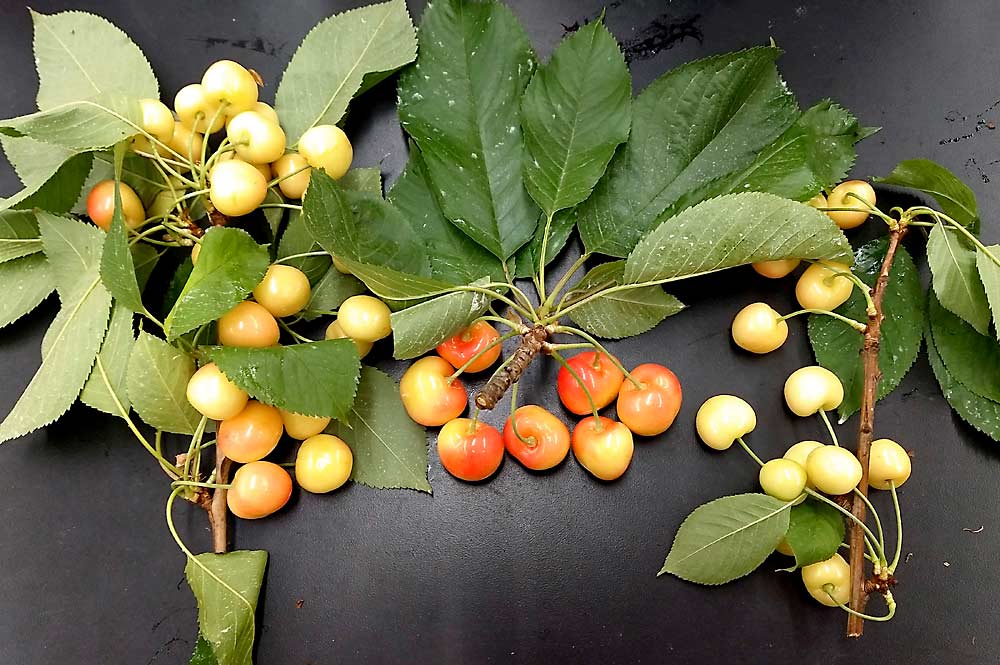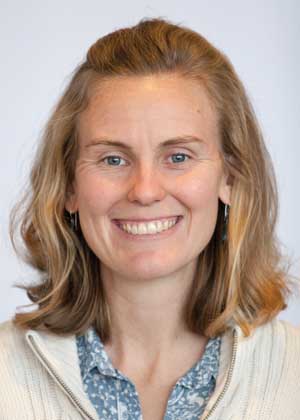
We wanted to share the latest sampling recommendations for X phytoplasma and little cherry virus, so growers and field staff go into the harvest season up to date. Over the last year, we learned more about when and in what tissue we are most likely to find X phytoplasma. With 38 percent of samples testing positive for X phytoplasma and more than 28,700 trees removed in 2019, aggressive scouting, sampling and tree removal remain critical to slowing the little cherry disease epidemic in Washington. Little cherry disease occurs in trees infected with either the X phytoplasma or one of the little cherry viruses; both pathogens result in unmarketable fruit.

Removing infected trees is important because every tree that contains X phytoplasma or little cherry virus is a source for leafhoppers or mealybugs, respectively, to spread these pathogens. Thorough scouting of blocks will help detect outbreaks early. Designate teams of scouts to walk (or four-wheel in low gear) blocks and mark suspect trees. Whenever possible, cover every row and look at every tree. Look at both sides of trees. Look at lower and upper limbs and close to the trunk, not just the extremities.
Sampling timing is critical. We have learned that the X phytoplasma overwinters in plant roots and takes a while to build up in the aerial part of the tree each year. It is important not to sample too early before the concentration in the shoots is high enough to detect. Wait to sample until the week before harvest, when you can start to see symptoms. Sampling can be done until about mid-August. The concentration of X phytoplasma in the tissue also goes down in the fall, so late-season sampling is also not recommended. New research will determine more accurately how late in the season we can sample. For now, sample for X phytoplasma and little cherry virus from one week before harvest to mid-August.

Send the correct tissue in order to get the most accurate results. For new infections, limbs expressing symptoms are the best place to try to detect for X phytoplasma and little cherry virus. If you have limbs with symptomatic fruit, take four 5-inch cuttings, including leaves and fruit stems, from the symptomatic limb(s). Harper’s team has found that the best tissue to extract X phytoplasma from is fruit stems. If you are sampling from nonsymptomatic trees, for example, trees next to a symptomatic tree, take four 5-inch cuttings — one from each leader. You will be least likely to get false negatives if you send four 5-inch cuttings, including leaves and fruit stems, from symptomatic limbs.
Make sure the samples reach the lab in good condition. Package each sample individually and label each bag with an easy-to-follow naming or coding system that matches the label on the tree. Keep tissue moist and cool (e.g., with an ice pack). Do not send old, dry or dead tissue or tissue from broken or snapped limbs. Do not send tissue contaminated with large amounts of powdery mildew, bird poop, etc. Commercial labs have testing available for shorter turn-around in 2020 (check the WSU links below for testing lab locations).
Consider how many samples to take. In blocks where the pathogen has not been detected before, sample symptomatic trees. In blocks or areas previously positive for X phytoplasma or little cherry virus, consider aggressive removal of symptomatic trees without testing, because once the pathogen becomes established, it spreads rapidly. Remember, the longer infected trees are alive in the orchard, the more likely they are to spread the pathogens. Some growers test a portion of symptomatic trees in order to train crews. For example, if they flag 20 trees, they send in samples for 10. If all 10 come back positive, they remove all 20 flagged trees. Considering tree age and block profitability: Generally, if more than about 20 percent of the block is infected, the entire block should be removed.
For more information, including information on tree removal, scouting and sampling protocols and case studies, visit: treefruit.wsu.edu/crop-protection/disease-management/western-x or treefruit.wsu.edu/crop-protection/disease-management/little-cherry-disease and pnwhandbooks.org/plantdisease/host-disease/cherry-prunus-spp-x-disease. •
—by Tianna DuPont and Scott Harper
Tianna DuPont is a tree fruit extension specialist based at Washington State University’s Tree Fruit Research and Extension Center in Wenatchee. Scott Harper is a WSU virologist and director of the Clean Plant Center Northwest, located at the Irrigated Agriculture Research and Extension Center in Prosser.






Leave A Comment